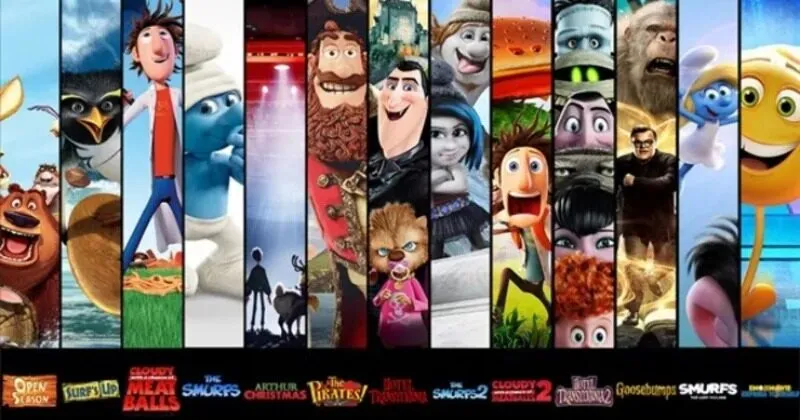Creating animated films that resonate with global audiences is no easy task. While the charm of animation can cross borders, producing films that appeal to different cultures, languages, and preferences presents a unique set of challenges. Let’s dive into the obstacles that filmmakers face when bringing their animated stories to international audiences.
Navigating language and translation barriers
Language can be a big hurdle. Translating a script isn’t just about swapping words from one language to another. It’s about keeping the tone, humor, and emotional impact intact. A phrase that works in English may not work in another language, and that can make or break a scene. Getting the translation right is crucial for keeping the story’s original essence.
Adapting scripts for multiple languages
One of the most critical challenges in creating animated films for international audiences is adapting scripts for multiple languages. After the initial hurdle of translating the dialogue into a new language is crossed, the script itself often needs a more detailed overhaul.
It’s not enough to simply swap words between languages because certain jokes, idioms, and cultural references that work well in one country may completely miss the mark in another. For example, wordplay or puns that are funny in English might be incomprehensible in French or Spanish.
To ensure that the story connects with diverse audiences, writers and translators often have to rewrite parts of the script. This can include changing jokes, rephrasing certain lines, or even removing cultural references that might not be understood internationally.
The goal is to maintain the story’s original message and emotional weight while making sure it resonates within each specific culture. This process requires a deep understanding of the target culture, as well as a good grasp of both the source and target languages.
Dubbing and voice acting for diverse markets
After adapting the script, the next hurdle is dubbing and voice acting for diverse markets. While subtitles are one option, most audiences prefer watching films in their own language with native voice actors. This means finding the right voice actors for each market, which is a bigger task than it might seem.
The new voice actors need to not only deliver their lines in sync with the animation but also capture the essence of the original performances. Each voice must match the character’s personality, emotional tone, and even quirks, making sure that the character still feels familiar to the audience, even in a different language.
The technical challenge here lies in syncing the new dialogue with the animation. In animated films, characters’ mouth movements are specifically designed to match the original language’s phonetics, which can differ greatly from the target language.
This means voice actors and sound editors have to work together closely to ensure that the dubbed version doesn’t feel awkward or disconnected. Every word needs to fit naturally, as if the character is speaking that language from the start.
Navigating cultural nuances and variations
Cultural differences can affect how animated films are received. What’s considered funny or heartwarming in one culture might be confusing or offensive in another. Filmmakers must be mindful of these differences to ensure that their story resonates with diverse audiences. Even small details, like gestures or symbols, can carry different meanings.
Adapting content for diverse cultural norms
Different cultures have different standards and norms, and that’s something filmmakers need to consider. Sometimes, scenes or characters need to be adjusted to fit local tastes.
This could mean changing how certain relationships are portrayed, tweaking character outfits, or even toning down certain elements like violence or romance. Ensuring the content aligns with cultural expectations is key to making the film relatable.
Adjusting humor and emotional cues
Humor doesn’t always travel well. What makes one group of people laugh might leave another completely unfazed. The same goes for emotional cues. Cultures express and interpret emotions in varied ways, so filmmakers need to adjust their storytelling to make sure that the audience connects with the characters, regardless of where they’re from.
Dealing with technical challenges in distribution and production
Technical issues can complicate global distribution. Different countries may have different standards for how animated films should be formatted or delivered. Filmmakers need to ensure their films meet these technical standards without losing quality. It’s a behind-the-scenes challenge that most viewers don’t think about, but it can have a big impact on how a film is presented.
Adapting animation styles for global preferences
Animation styles differ greatly across the world. While some markets may prefer traditional hand-drawn animation, others might lean towards 3D or a more experimental look. Filmmakers often have to find a balance between their creative vision and what global audiences prefer. Adjusting the animation style to fit international tastes can make the difference between a film being a hit or a miss.
Managing global distribution and censorship
Getting an animated film into international markets involves navigating complex distribution networks. Filmmakers must find the right partners to get their films shown in theaters or on streaming platforms worldwide. On top of that, they often face censorship challenges. Some countries have strict rules on what can and can’t be shown in films, requiring cuts or edits to make the content acceptable.
Collaborating with international teams
Producing animated films for international audiences often means working with teams from different parts of the world. Coordinating across different time zones, languages, and working styles can be difficult. Clear communication is key to making sure everyone stays on the same page, especially when juggling tight deadlines.
Managing coordination across different time zones and languages
Time zone differences can slow down production. When one team is just starting their workday, another might be wrapping up. Language barriers can also make it challenging to communicate effectively. Keeping the whole team in sync requires extra effort and careful planning to make sure that the project stays on track.
Addressing budgetary and financial constraints
Finally, producing animated films for international audiences can be expensive. From translation and dubbing to adjusting content for different markets, the costs can add up quickly. Filmmakers need to balance their creative ambitions with the budget to ensure that the film can still be profitable while reaching a global audience.
Conclusion
Producing animated films for international audiences is a complex process, filled with challenges from language barriers to cultural differences and technical issues. However, when done right, the reward is a film that resonates with viewers around the world. By adapting content, adjusting to cultural norms, and working closely with international teams, filmmakers can overcome these obstacles and bring their animated stories to life for a global audience.


